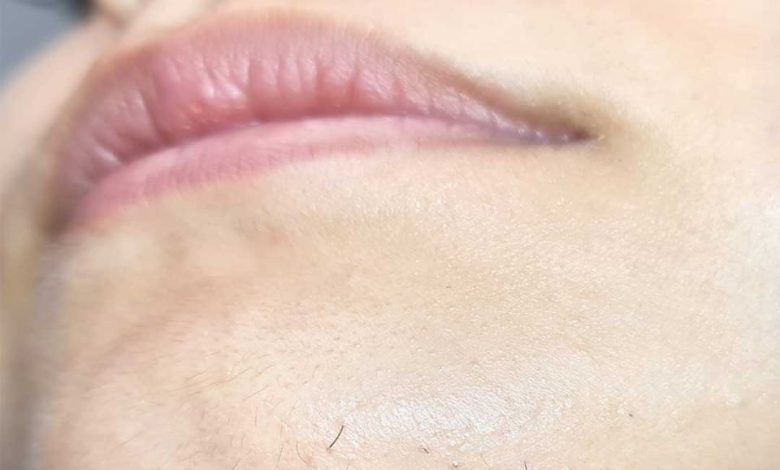Chin Whiskers

ADVERTISEMENT
Understanding and Managing Chin Whiskers in Women
Chin whiskers are a common occurrence in women, though they can sometimes be a source of concern. These facial hairs vary in texture and color—ranging from fine and light to coarse and dark. Some women may notice only a few stray hairs, while others experience more pronounced growth. Understanding the causes behind chin whiskers is key to managing them effectively. While facial hair is a natural part of life for many women, factors like hormonal fluctuations, genetics, and medical conditions play a role in its development.
ADVERTISEMENT
The Science Behind Chin Hair Growth
Like all body hair, chin hair growth follows a cycle consisting of the anagen (growth), catagen (transitional), and telogen (resting) phases. Hormones known as androgens, including testosterone, significantly influence this process. Although women naturally produce androgens, an imbalance or heightened sensitivity to these hormones can lead to more noticeable facial hair. Genetics also affect hair follicle density and distribution, determining the extent of hair growth on the chin.
ADVERTISEMENT
Hormonal Factors Contributing to Chin Whiskers
Hormonal imbalances are one of the primary causes of chin whiskers in women. Conditions like polycystic ovary syndrome (PCOS) can lead to elevated androgen levels, resulting in hirsutism—excessive hair growth in areas typically associated with male hair patterns. Similarly, menopause can trigger increased facial hair as estrogen levels decline, shifting the hormonal balance. Certain medications, including birth control pills and hormone therapies, may also contribute to changes in facial hair growth.
Genetic Factors and Family History
Genetics strongly influence hair growth patterns. If your mother or grandmother had chin whiskers, there’s a higher likelihood that you might develop them, too. Additionally, ethnicity plays a role—women of Mediterranean, Middle Eastern, and South Asian descent often experience more facial hair than others. By understanding your genetic predispositions, you can anticipate hair growth patterns and determine the best approach to managing them.
Medical Conditions Linked to Excess Facial Hair
Beyond PCOS, excessive facial hair growth can be linked to Cushing’s syndrome, adrenal gland disorders, and certain tumors, all of which increase androgen production. Hypothyroidism may also affect hair growth patterns. If you notice sudden or excessive changes in facial hair, consult a healthcare provider to rule out any underlying medical conditions.
Effects of Chin Whiskers on Women’s Well-being
Facial hair growth can impact women’s self-image and daily life. Some common effects include:
- Self-consciousness and embarrassment
- Anxiety over appearance
- Time and financial costs of hair removal
- Skin irritation from frequent removal
- Impact on social interactions and relationships
- Negative body image and self-esteem concerns
- Obsession with checking and removing hair
- Avoidance of certain social situations
- Worry about underlying health conditions
- Potential mental health effects, including depression and anxiety
Psychological and Social Impacts
Facial hair can influence self-esteem, leading some women to feel uncomfortable in social settings or professional environments. Societal beauty standards often contribute to this pressure, reinforcing the expectation of smooth, hair-free skin. While stigma exists, conversations around body positivity and embracing natural beauty are gradually shifting perspectives.
Effective Hair Removal Methods
Women have multiple hair removal options for managing chin whiskers:
- Temporary solutions: Shaving, plucking, waxing, and depilatory creams
- Longer-lasting treatments: Laser hair removal and electrolysis target hair follicles for reduced growth
- Prescription options: Topical creams, like eflornithine, help slow hair growth
Choosing the right method depends on skin type, sensitivity, and lifestyle preferences. Consulting a dermatologist may be beneficial for skin irritation concerns or specialized treatments.
When to See a Healthcare Professional
Sudden or excessive facial hair growth—especially when paired with irregular periods, weight changes, or acne—could indicate an underlying condition. A healthcare provider may recommend:
- Blood tests to assess hormone levels
- Imaging tests to examine the ovaries and adrenal glands
Early diagnosis can aid in managing symptoms and improving overall well-being.
Lifestyle Changes and Natural Remedies
Some natural approaches may help regulate hair growth:
- Maintaining a healthy weight—especially for women with PCOS
- Eating a balanced diet rich in fruits, vegetables, and whole grains
- Spearmint tea, which may have anti-androgen properties
- Stress management techniques like yoga and meditation, as stress can impact hormone levels
Conclusion: Acceptance and Management
Chin whiskers are a common experience for many women, and understanding their causes can ease concerns. Whether choosing hair removal or embracing natural beauty, the decision should be based on personal comfort and confidence. Women facing this challenge should know they are not alone, and resources are available to support their health and well-being.




